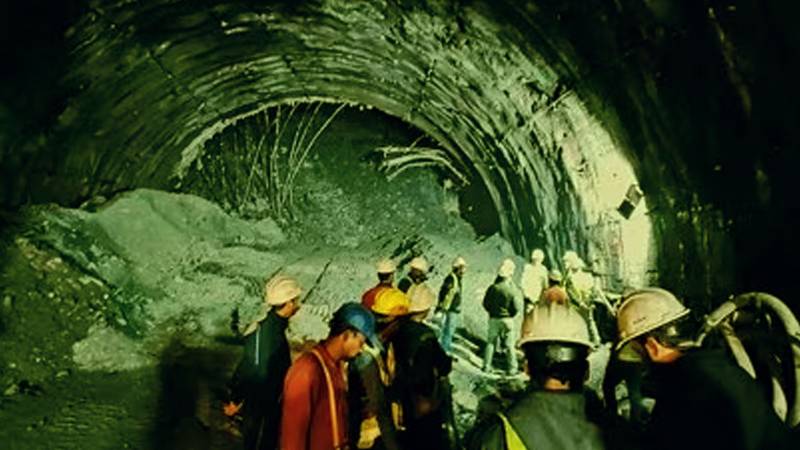
The first photographs of 41 men stranded for more than a week in a highway tunnel in the Indian Himalayas surfaced on Tuesday, showing them standing in the cramped environment and speaking with rescue officials.
The guys have been trapped in the 4.5-kilometre (3-mile) tunnel in Uttarakhand state since it collapsed early on Nov. 12 and are safe, according to authorities, with access to light, air, food, water, and medications.
They haven't disclosed what triggered the cave-in, although the area is prone to landslides, earthquakes, and floods. Snags in digging through the rubble in the rugged terrain have hindered efforts to pull the 41 men out.
Authorities presented a 30-second video in which approximately a dozen of the stranded men stood in a semi-circle in front of the camera, wearing helmets and construction worker jackets over their clothing, against the backdrop of the tunnel lights.
Outside, a rescue worker could be heard urging the guys to come forward one by one to check their names on the walkie-talkie gear that had been sent in.
According to the police, the footage was captured with a medical endoscope camera that was inserted through a second, bigger conduit 6 inches (15 cm) in diameter that was bored through the rubble on Monday.
According to one officer in the rescue control center who spoke to Reuters on condition of anonymity, the trapped guys looked to be doing great on the video, answering questions about their well-being by saying they were fine.
On Tuesday, rescuers plan to continue horizontal drilling through a 60-meter (195-foot) mound of rubble in order to drive through a pipe wide enough for the trapped men to climb out.
Drilling was halted on Friday due to a machine malfunction and worries of another collapse.
Authorities are also working on five additional options to extract the workers, including digging vertically from the mountain's summit.

